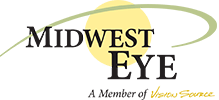How Vulnerable Are Our Eyes to Germs?

When we rub our eyes, we might be jeopardizing our eye health.
Rubbing our eyes is often an automatic response during moments of fatigue, discomfort from a foreign object, or sensations of dryness and itchiness. While it might seem like a quick fix, this action can actually escalate the issue. This is because with each touch, we transfer bacteria from our hands — along with anything else they’ve come into contact with since we last cleaned them — directly into one of the most delicate areas of our body.
The Microbial World on Our Skin and Under the Fingernails
You may find it astonishing to learn about the diversity of microscopic life residing on our skin, collectively known as “skin flora.” This ecosystem isn’t entirely menacing; indeed, some of its members play beneficial roles. However, certain microbes pose the risk of causing infections or illnesses if they manage to penetrate the skin’s protective layer. This vulnerability renders our eyes an easy target for these organisms. As we interact with various surfaces, microbes adhere to our skin and find refuge under our fingernails, where they multiply and eventually reach other areas we touch, including our eyes.
The Eye’s Built-in Protection
Thankfully, our eyes come equipped with their own set of defenses. Eyelashes serve a purpose beyond mere aesthetics, acting as barriers against foreign particles. Additionally, the act of blinking helps to clear away any debris that lands on the eye. The eye’s tear film functions as an intricate, multi-layered protective system, akin to a moat surrounding a fortress. However, the act of rubbing our eyes can lead to potential injury to the cornea, undermining these natural protective measures.
Steps to Shield Our Eyes from Bacteria
Minimizing direct contact with your eyes is advisable, particularly for contact lens wearers. In instances where touching your eyes is unavoidable, like inserting or removing contact lenses, reducing the risk of infection can be achieved by thoroughly washing your hands with soap and maintaining short, clean fingernails.
We’re serious about fingernails being covered in germs. In fact, it’s the main reason food service workers and healthcare professionals alike have to wear gloves to prevent contaminating everything they touch in the course of their work. It’s basically impossible to scrub away all those germs, and it’s a problem that affects artificial nails too.
Addressing Eye Infection Worries
Should you notice symptoms such as itching, redness, excessive tearing, sensitivity, or a burning sensation in your eyes, it’s possible you’re dealing with an eye infection. We encourage you to book an appointment with us for assistance in addressing the infection or identifying other potential causes.

